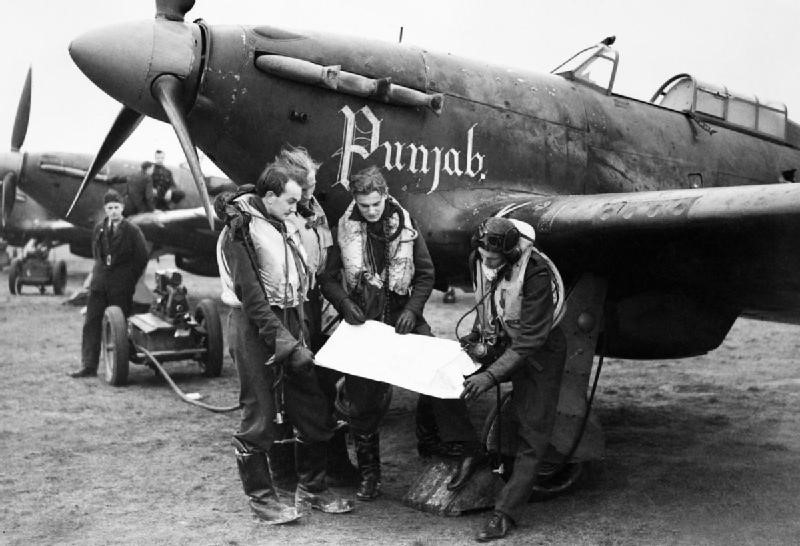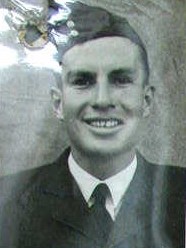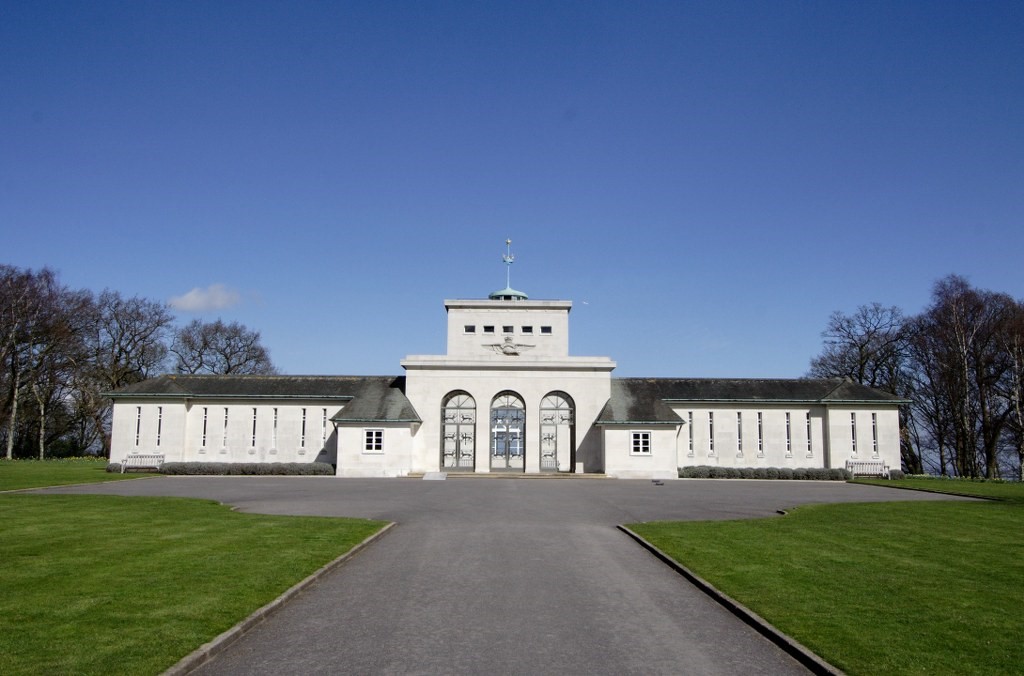Sergeant Richard Cameron, the son of Kenneth Beauchamp Cameron and Eileen Mary Cameron was born at Toowoomba in Queensland on 27th August 1918. He was educated at the Toowoomba Grammar School during 1931 and 1932. Whilst at the Toowoomba Boys’ Grammar School, he served in cadets. He then attended the Queensland Agricultural College at Gatton in 1933. After leaving school, he was employed as an Overseer on a Sheep Station during the period 1933-1937 and as a Grazier until he enlisted in 1940. He applied for aircrew training in the Royal Australian Air Force on 9th April 1940. He was enrolled in the Reserve of the R.A.A.F. after swearing an oath of allegiance on 10th April 1940. At the age of 21 years and 7 months he was enlisted into the Citizen Air Force of the R.A.A.F, on 19th August 1940. At the time of enlistment he was employed as a Grazier/Overseer of a sheep station. His physical description was that he was 6 feet 2 inches in height and weighed 168 pounds. He had a ruddy complexion, brown eyes and brown hair. He stated that he was of the Church of England religion. He gave his next of kin as his father, Mr Kenneth Richard Cameron, residing at Bullamon Plains, Thallon, Queensland.
Sergeant Richard Cameron was allotted the service number of 404451 and sent to No. 2 Initial Training School at Bradfield Park in Sydney on 21st August 1940. He then joined No. 5 Elementary Flying Training School at Narromine in New South Wales on 19th September 1940. He joined No. 2 Embarkation Depot at Bradfield Park in Sydney on 12th December 1940 to prepare for overseas service. He embarked from Sydney for Canada on 28th December 1940. He joined No. 4 Service Flying Training School at Saskatchewan in Canada on 25th January 1941. He joined No. 2 Manning Depot at Brandon, Manitoba, Canada, on 31st March 1941. He joined No. 10 Service Flying Training School at Dauphin in Manitoba on 15th May 1941. He graduated as a pilot and qualified for the Pilot’s Flying Badge on 15th July 1941. He was transferred to No. 1 Manning Depot at Halifax in Canada for transfer to the Royal Air Force in England. He embarked from Canada on 4th August 1941 and after arriving in England he joined No. 3 Personnel Reception Depot at Bournemouth on 22nd August 1941.
He joined No. 58 Operational Training Unit at Royal Air Force Station Grangemouth for training as a day fighter pilot on 27th August 1941. He joined No. 601 (County of London) Squadron at Royal Air Force Station Northolt on 7th October 1941. No. 601 Squadron was an operational day fighter squadron operating Hawker Hurricane and Supermarine Spitfire fighters. He joined No. 56 (Punjab) Squadron at Royal Air Force Station Duxford on 16th October 1941. In 1941 No. 56 Squadron carried out missions over the continent including escorting bombers raiding targets in German-occupied France.

Imperial War Museum photograph CH 4567 showing pilots and Hawker Hurricane aircraft of No. 56 (Punjab) Squadron at Royal Air Force Station Duxford.
Sergeant Richard Cameron was the pilot of a No 56 Squadron Hurricane Fighter 11B Z3328 that crashed in West England on 24th December 1941 whilst on a non-operational flight. The Air Ministry notified his father who was a grazier residing at Bullamon Plains, Thallon, Queensland, that he was missing whilst he was on non-operational night flying. Extensive ground searches were carried out, however, no trace was found of Richard Cameron and his aircraft. At the time of his death Richard Cameron was 23 years of age.
A subsequent accident report into the loss of Sergeant Richard Cameron and his aircraft stated:
Sergeant Cameron had been sent up in clear weather in bright moonlight to carry out a sector reconnaissance under control from Operations Room. The visibility was good and there was no cloud in the vicinity of Duxford, but elsewhere there were thin patches of cloud at a height of 13,000 feet. Sergeant Cameron had been given vectors of 010, 020, 320, 270, followed by 180 for base. During the latter part of the reconnaissance he was at 12,000 feet. At approximately 12 miles from base, controller gave 280 intending him to take a short distance to the West before bringing him back to base to land. Sergeant Cameron acknowledged this vector and D.F. plot taken at the time indicates that he followed it. Four minutes later he was given vector 090, which he did not acknowledge. He was then called several times from the ground and from the air by Honiley and by Wittering but no reply was received.
The Observer Corps were immediately notified and asked to try and plot him, but failed to do so. Homing beacons were put on for a considerable distance from the West and floodlights and other lights were put on, at the Aerodrome for a considerable time. These measures produced no results and no clue has since come to light to indicate in which direction the aircraft actually proceeded or what has happened to it subsequently. Radio transmission up to the time of the last message was very good and in view of the clarity of the weather at the time it is probable that Sergeant Cameron was in sight of the Aerodrome beacon when the last transmission from him was received. He had been thoroughly instructed in the procedure to be taken to obtain a homing bearing from searchlights in case of radio transmission failure, or from an aerodrome beacon on its aerodrome.
In view of the fact that three other aircraft were flying at the time and using the same frequency radio transmission, transmission had been practically continuous since Sergeant Cameron took off and it would have been impossible for him to fail to notice immediately his radio transmitter receiver had failed. If he had received and acted on the vector of 090 given him 4 minutes after the previous one of 280 he must have passed practically over base. In view of the above it is difficult to suggest the cause of this accident, but three possibilities are considered to exist:
- Sergeant Cameron followed the vector of 280 for a considerable time owing to the failure of his radio transmission set, and that he eventually force landed somewhere in the West of England.
- That he received a vector of 090 and acted upon it, although not able to acknowledge it. That he eventually forced landed in East Anglia or in the sea.
- That his engine failed and while trying to carry out a forced landing failed to use his radio transmitter.
Extensive search is being made in all wooded areas within 100 miles of Cambridge, but in view of the nature of the country, it is considered unlikely that the aircraft or the pilot would be found in this area, in which case, it can only be assumed that Sergeant Cameron flew for a considerable time either on an easterly of westerly vector before eventually forced landing at a considerable distance from Duxford.
Sergeant Richard Cameron’s name is commemorated on the Runnymede Memorial for the Missing in the United Kingdom. His name is commemorated on Panel No. 120 at the Australian War Memorial in Canberra and locally on the Toowoomba Mothers’ Memorial, the Toowoomba Soldiers’ Memorial Hall Honour Board, the Toowoomba Grammar School WW2 Honour Board, the St Luke’s Toowoomba Parish Roll of Honour and the St. Luke’s Toowoomba Memorial Window.
Note
A stained glass memorial window was installed in St Luke’s Church in Toowoomba to honour his memory and that of his brother, William Beauchamp Cameron who lost his life in an aircraft accident.




